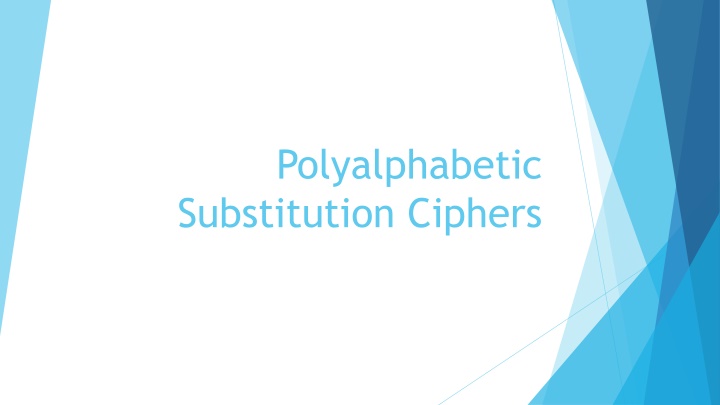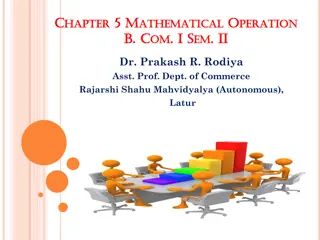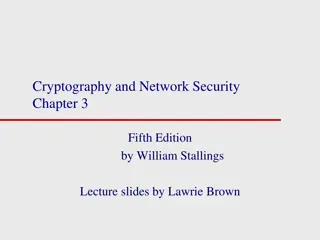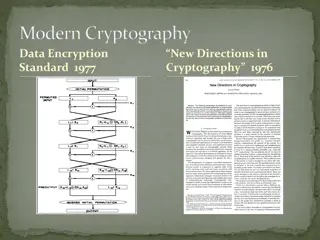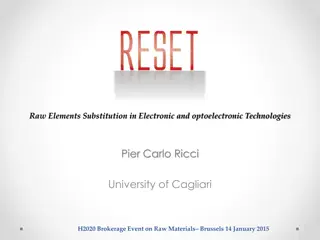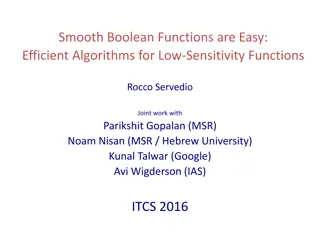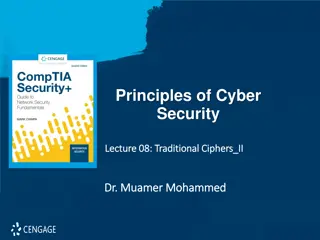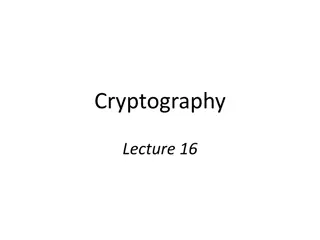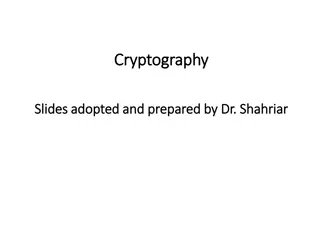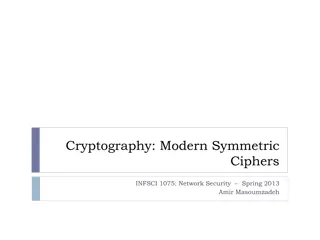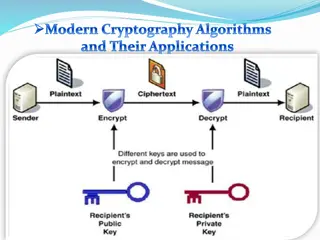Polyalphabetic Substitution Ciphers: Complexity and Decryption Tricks
The world of polyalphabetic substitution ciphers offers a deeper level of complexity by utilizing multiple alphabets to enhance security. This method involves encrypting and decrypting messages using alternating cipher alphabets, challenging traditional frequency analysis techniques. Discover how encryption with multiple alphabets poses a new decryption puzzle and how frequency analysis can still be a valuable tool in deciphering coded messages. Explore the advantages of adding more alphabets for enhanced security, and learn about historical cipher methods like Vigenère's and Homophonic Substitution Cipher. Uncover the intricacies of these ciphers and their impact on cryptography.
Download Presentation

Please find below an Image/Link to download the presentation.
The content on the website is provided AS IS for your information and personal use only. It may not be sold, licensed, or shared on other websites without obtaining consent from the author.If you encounter any issues during the download, it is possible that the publisher has removed the file from their server.
You are allowed to download the files provided on this website for personal or commercial use, subject to the condition that they are used lawfully. All files are the property of their respective owners.
The content on the website is provided AS IS for your information and personal use only. It may not be sold, licensed, or shared on other websites without obtaining consent from the author.
E N D
Presentation Transcript
Polyalphabetic Substitution Ciphers
First Steps Towards Complexity If one alphabet is good, then two alphabets must be better! By doubling the number of cipher alphabets, the frequency of each coded letter is (approximately) halved.
Practice Encrypting/Decrypting Choose 2-3 sentences from The Code Book as your plaintext message. Then, using the cipher key below, encrypt the message by alternating between the first and second cipher alphabet. Exchange ciphers and decipher your partner s message.
Decryption with Multiple Alphabets Does frequency analysis fail us? Some of our tricks don t help us out anymore: Double letters will be encrypted in two different ways. This is true throughout an e will be encrypted as both a K and an F in different places in the ciphertext.
Frequency AnalysisNot All is Lost! Assuming our plaintext message is in English, we can predict that e will be the most common letter in the text. Although there are two options that will encrypt the letter e , these two letters K and F should appear most frequently in the ciphertext. Given a long enough message, we can still use frequency analysis to decrypt it.
SoAdd More Alphabets This seems like the obvious solution, right? It s much harder to break Ergo, it s more secure So, why didn t Vigen re s 26-alphabet cipher catch on?
Working By Hand Vigen re s Cipher is a huge leap forward in terms of security (it took another couple centuries to break), but it s not easy to encrypt and decrypt messages quickly when you are working by hand. Instead, the more commonly used cipher of the time was Homophonic Substitution Cipher.
Homophonic Substitution Cipher In this cipher each plaintext letter has some number of symbols that represent it in the ciphertext; the number of different symbols for each letter is based on the proportions of the letter frequency. For example, the letter a appears ~8% of the time in English, so there will be 8 different symbols that can substitute for the letter a . Each letter in the ciphertext should appear ~1% of the time.
What Type of Cipher is This? Is the Homophonic Substitution Cipher a: Mono-alphabetic substitution cipher? Poly-alphabetic substitution cipher? Something different?
One-to-One Functions Definition of a Function For every input (x-value), there is exactly one output (y-value). Vertical Line Test If BOTH the original function and its inverse are functions, we say this function is one-to-one.
Some Functions From Math Which of these are one-to-one functions? Linear Exponential Quadratic Logarithms Inverse Power Trigonometric
Homophonic Substitution Cipher as a Function The encryption of a message using a Homophonic Substitution Cipher is NOT a function (more than one output for each input) The decryption of a message using a Homophonic Substitution Cipher IS a function (only one output for each input) Therefore this function is not one-to-one
